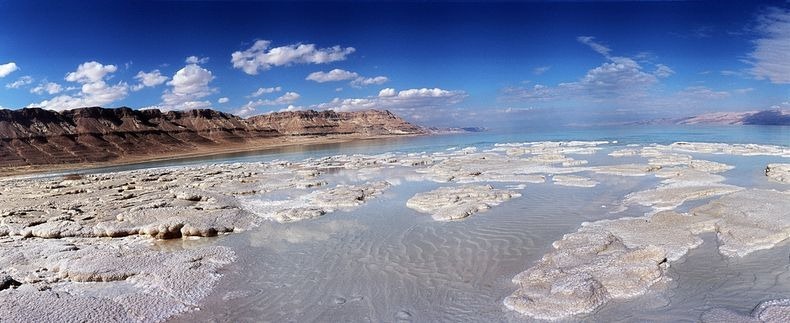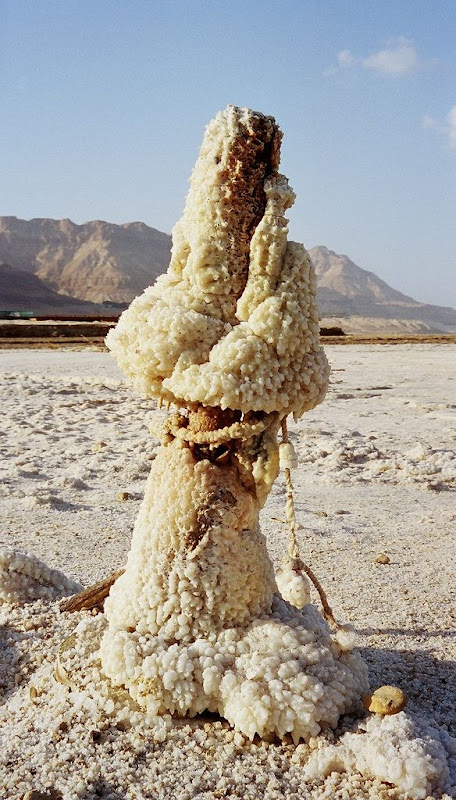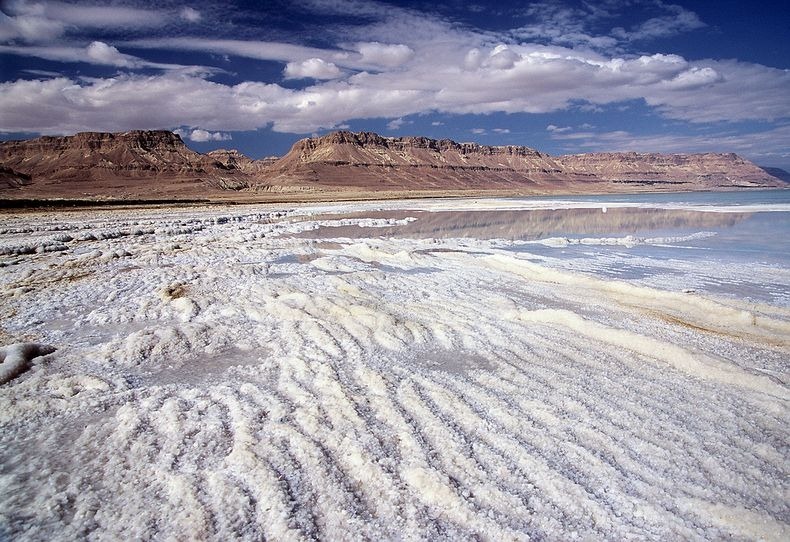You have to descend 423 meters below sea level to reach its surface and shores.
At 377 meters deep, it is also the deepest hypersaline lake in the world.
Dead Sea has a salinity level of of 33.7%, which is 8.6 times saltier than the ocean.

As much as 340 grams of salt is dissolved per liter of water.
The water of the lake is so dense that it is impossible to sink in the Dead Sea.
The Dead Sea is fed by the Jordan river but there is no outlet.

The odd chemistry results in the appearance of some striking, but transient, salt crystal formations.
Their hoods are circular to elliptical and the mushroom cap can reach up to half a meter in diameter.
Some formations have inverted pyramidical shapes protruding from the water, while others look like weathered columns.
Turbulence and wave motion prolong the deposition of the crystals and give the water a striking, nebulous quality.
On some occasions, sheets of air bubbles form foam like surf on the ocean.
At others times, chips of asphalt decorate the Dead Sea.
As the water level decreases, the characteristics of the Sea and surrounding region may substantially change.
With the passage of time fewer of these natural formations and phenomena of the sea will remain.
Already the evaporation rate exceeds the inflow rate and eventually the whole area will become mud flats.
In 2009 a project to conserve the Dead Sea was proposed.
The project is anticipated to be completed by 2017.
Photo credit: Baz Ratner, Reuters
Sources:Wikipedia,Saudi Aramco World

















